The holiday of Purim is represented by an array of objects from Yeshiva University Museum's collection - from rare ceremonial Judaica to popularly themed ephemera. I would like to share several examples with you here today.
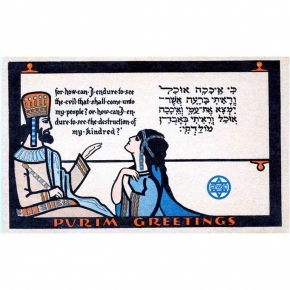
Purim Greeting Card Issued by the Jewish Welfare Board Collection of Yeshiva University Museum
This Purim Greeting Card was issued by the Jewish Welfare Board, an offshoot of the Young Men’s Hebrew Association, during the first World War. The Young Men’s Hebrew Association was originally formed to provide hospitality centers and raise funds for the 200,000 Jews active in the war. This postcard was reprinted during World War II.
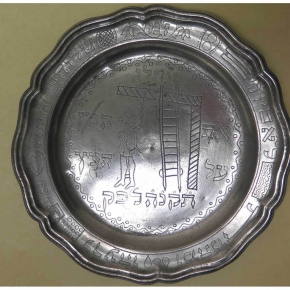
Purim Plate Pewter, engraved. Germany, 1795
Gift of Professor Saul Lieberman
The tradition of using decorative plates for the exchange of mishloach manot on Purim goes back several centuries. This plate is engraved with a scene depicting the hanging of Haman on a gallows, as described in the Book of Esther.
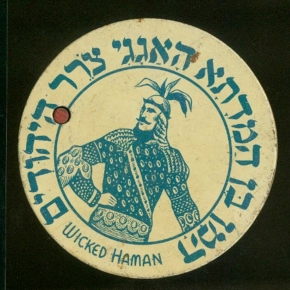
Purim noisemaker depicting Haman, tin, mid 20th century,
Collection of Yeshiva University Museum
Noisemakers (known as graggers) such as this are used to drown out the name of Haman, the villain in the Purim story, during the synagogue recitation of the Book of Esther. It is decorated with a rather dashing figure identified as “Wicked Haman”.
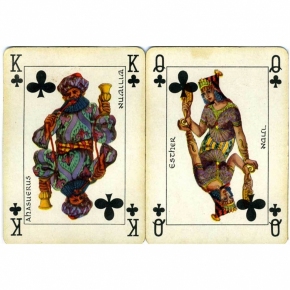
Playing cards, Zeev Raban, Tel Aviv, ca. 1950s
Collection of Yeshiva University Museum
A deck of playing cards designed by Zeev Raban (1890-1970) depicts Biblical kings and queens as the court cards; Esther and Ahasuerus are the Queen and King of Clubs.
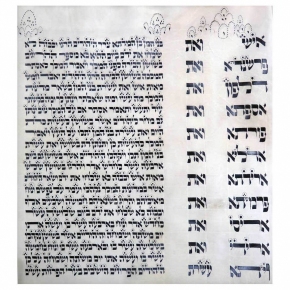
Esther Scroll of Rabbi Jacob Meir Sagalowitsch Ink on vellum Poland or Germany, ca. 1920s-1930s Collection of Yeshiva University Museum Gift of Joel Sagall
This Esther scroll, inscribed in beautiful calligraphy decorated with pen flourishes, belonged to a former Chief Rabbi of Danzig who fled Nazi Germany and came to New York where he founded Kehilat Yaakov, now known as the Carlebach Shul.
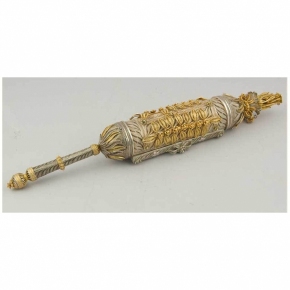
Esther scroll and case. Silver: filigree, gilt. Ioannina, Greece, 19th century. Collection of Yeshiva University Museum. Dedicated by Jewel (Judy) M. Weintraub in memory of her grandfather, Morris Israel Levy; her grandmother, Louisa Coffina Levy; and her mother, Stella Levy Bernstein.
This elaborate silver filigree cases for an Esther scroll is characteristic of Ottoman work made in Ioannina. It has three-tiered crown finials terminating in a cone, knop and bead. Elaborate cases for Esther scrolls were sometimes given as gifts to bridegrooms by wealthy families in the Ottoman Empire.
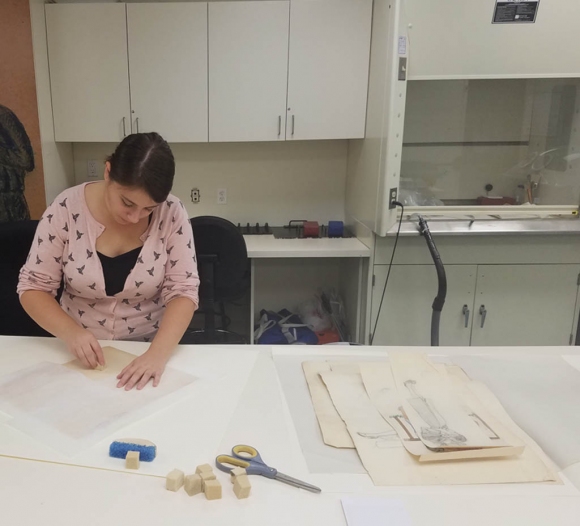
Comments
Share Your Comments: